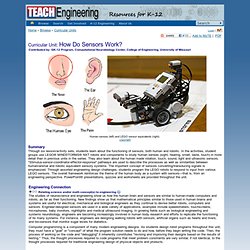

EV3 Robot Educator: Beyond Basics, Ex. 12-18 - MIND-STORMS.COM. The colour sensor block is in 'measure>colour' mode.

The output, a number which corresponds to the detected colour, is passed to a compare block which is in 'equal to' mode. The block compares the numerical input from the colour sensor block with the number 3 which corresponds to the colour green. If the numbers are equal (i.e. if the sensed colour is 'green') then the logical value 'true' is passed through a data wire to the switch block, otherwise the value 'false' is passed. In the 'true' case (green detected) the upper branch of the switch block is run, causing the 'move steering' block to drive the robot forward at 50% power for 1 rotation of the wheels.In the 'false' case (green not detected) the lower branch of the switch block is run, causing a 'click' sound to be played at 100% volume.
The sound block's 'play type' is set to 'Wait for completion' (option 0) so the program will pause for an instant until the sound finishes playing. 13. Pay attention! 14. 15. 16. 17. 18. STEMcentric. 2013EV3Programming.pdf. Robotics Academy. How Do Sensors Work? - Curricular Unit. Curricular Unit: How Do Sensors Work?

Through six lesson/activity sets, students learn about the functioning of sensors, both human and robotic. In the activities, student groups use LEGO® MINDSTORMS® NXT robots and components to study human senses (sight, hearing, smell, taste, touch) in more detail than in previous units in the series. They also learn about the human made rotation, touch, sound, light and ultrasonic sensors. "Stimulus-sensor-coordinator-effector-response" pathways are used to describe the processes as well as similarities between human/animal and robotic equivalent sensory systems. The important concept of sensors converting/transducing signals is emphasized.
Humans Are Like Robots - Curricular Unit. Curricular Unit: Humans Are Like Robots Four lessons related to robots and people present students with life sciences concepts related to the human body (including brain, nervous systems and muscles), introduced through engineering devices and subjects (including computers, actuators, electricity and sensors), via hands-on LEGO® robot activities.

Students learn what a robot is and how it works, and then the similarities and differences between humans and robots. For instance, in lesson 3 and its activity, the human parts involved in moving and walking are compared with the corresponding robot components so students see various engineering concepts at work in the functioning of the human body. This helps them to see the human body as a system, that is, from the perspective of an engineer. Students learn how movement results from 1) decision making, such as deciding to walk and move, and 2) implementation by conveying decisions to muscles (human) or motors (robot).
Our Bodies Have Computers and Sensors - Curricular Unit. Curricular Unit: Our Bodies Have Computers and Sensors Students learn about the human body's system components, specifically its sensory systems, nervous system and brain, while comparing them to robot system components, such as sensors and computers.

The unit's life sciences-to-engineering comparison is accomplished through three lessons and five activities. The important framework of "stimulus-sensor-coordinator-effector-response" is introduced to show how it improves our understanding the cause-effect relationships of both systems. This framework reinforces the theme of the human body as a system from the perspective of an engineer. What Is a Computer Program? - Curricular Unit. Curricular Unit: What Is a Computer Program?

Through four lesson and four activities, students are introduced to the logic behind programming. Starting with very basic commands, they develop programming skills while they create and test programs using LEGO® MINDSTORMS® NXT robots. Students apply new programming tools—move blocks, wait blocks, loops and switches—in order to better navigate robots through mazes. Through programming challenges, they become familiar with the steps of the engineering design process. The unit is designed to be motivational for student learning, so they view programming as a fun activity. Riaz Helfer, Sachin Nair, Pranit Samarth, Satish S. Robot Design Challenges - Curricular Unit. Curricular Unit: Robot Design Challenges Through the two lessons and five activities in this unit, students' knowledge of sensors and motors is integrated with programming logic as they perform complex tasks using LEGO® MINDSTORMS® NXT robots and software.

First, students are introduced to the discipline of engineering and "design" in general terms. Then in five challenge activities, student teams program LEGO robots to travel a maze, go as fast/slow as possible, push another robot, follow a line, and play soccer with other robots. This fifth unit in the series builds on the previous units and reinforces the theme of the human body as a system with sensors performing useful functions, not unlike robots. Through these design challenges, students become familiar with the steps of the engineering design process and come to understand how science, math and engineering—including computer programming—are used to tackle design challenges and help people solve real problems. LEGOengineering – Inspiration and support for LEGO-based engineering in the classroom.